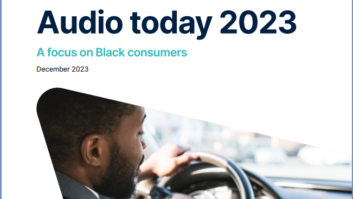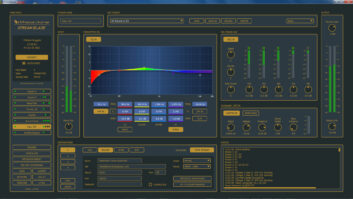
Both African-American and Hispanic listeners are driving significant gains in audio streaming via smartphone. Listening via this medium is up 30% among black consumers and up 29% among Hispanic listeners over the past year.
While it’s been well established that radio has greatest reach across all U.S. entertainment mediums, that growth is continuing to significantly climb with one particular portion of the American listening audience.
According to a recent Nielsen report, the African-American and Hispanic listening audience now accounts for one-third of the U.S. listening audience, and that number continues to grow.
The section from the most recent State of the Media: Audio Today 2017 report from Nielsen looks at radio listeners and found that radio continues to be the top-reach vehicle each week for African-American and Hispanic radio users when compared to other media. That growth is happening in the car, in the home as well as via streaming audio on the smartphone.
Radio reaches 98% of Hispanic consumers during the week, exceeding the overall national average of 93%. Compare that with the reach of TV (91%), smartphones (81%), computers (48%), TV-connected devices (41%) and tablets (34%).
Across the board, the outlook for radio is a positive, the report found. When segmenting listeners by ethnicity between the years 2013 and 2017, a total of 174.8 million listeners aged 12 and older are tuning into radio each week. In 2013, that number was 172.4 million. For African-American listeners, the number of weekly listeners rose from 30.8 million in 2013 to 32. 3 million in 2017; for Hispanic listeners the numbers were 39.5 million in 2013 and 42.4 million in 2017.
And these listeners are consuming radio in more locations than before. Both demographics are driving significant gains in audio streaming via smartphone. Listening via this medium is up 30% among black consumers and up 29 percent among Hispanic listeners over the past year.
The report also reveals that despite the increasing influence of digital mediums, traditional radio continues to attract young listeners who grew up fully connected with digital media. The top format for African-American listeners aged 12–17 was urban contemporary; for young Hispanic listeners, the top choice is pop contemporary hit radio.
Despite the growth of radio listening among these two groups, there are differences. In looking more closely at the habits of these two demographics, the report found that 54% of Hispanic radio listeners are men, while only 48% of black radio listeners are male. Likewise, the report found that African-American listeners spend more time with radio overall — averaging 13 hours and 58 minutes each week — which is more than a full hour more than Hispanic listeners, which clocked in at an average of 12 hours and 50 minutes of listening per week.
These two groups also tune in at different times of the day. The top listening time for black listeners is evening hours — between 3 p.m. and 7 p.m. — while the top daypart among Hispanic listeners is between 10 a.m. and 3 p.m.
Similarities remain, however. The two groups exhibit similar preferences for favorite listening location: out of the home. Those numbers clock in at 64% among blacks and 70% among Hispanics. There are also similarities in terms of ad spend. The top advertiser on both Mexican regional/Spanish radio and urban/rhythmic radio (which are the top formats for both groups) was McDonald’s. Other top 10 advertisers include wireless providers (like T-Mobile and AT&T) and major retailers (like Macy’s and Home Depot).
“The national radio audience continues to diversify,” the report said. In total, the Hispanic and black radio audience totals 74.7 million people 12 and older. That a jump of 6.25% (from 70.3 million) just five years ago.












